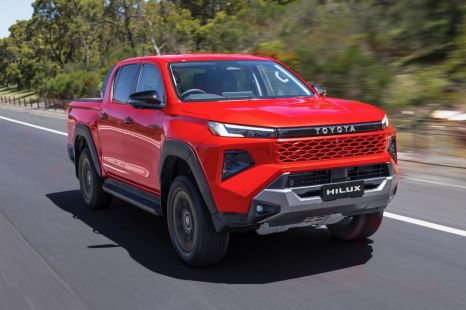

Ben Zachariah
2026 Toyota HiLux review: Quick drive
4 Days Ago
The CX-30 M Hybrid is a very, very mild-hybrid. But, this G20e Evolve offers solid value relative to the range to go with minor fuel savings.

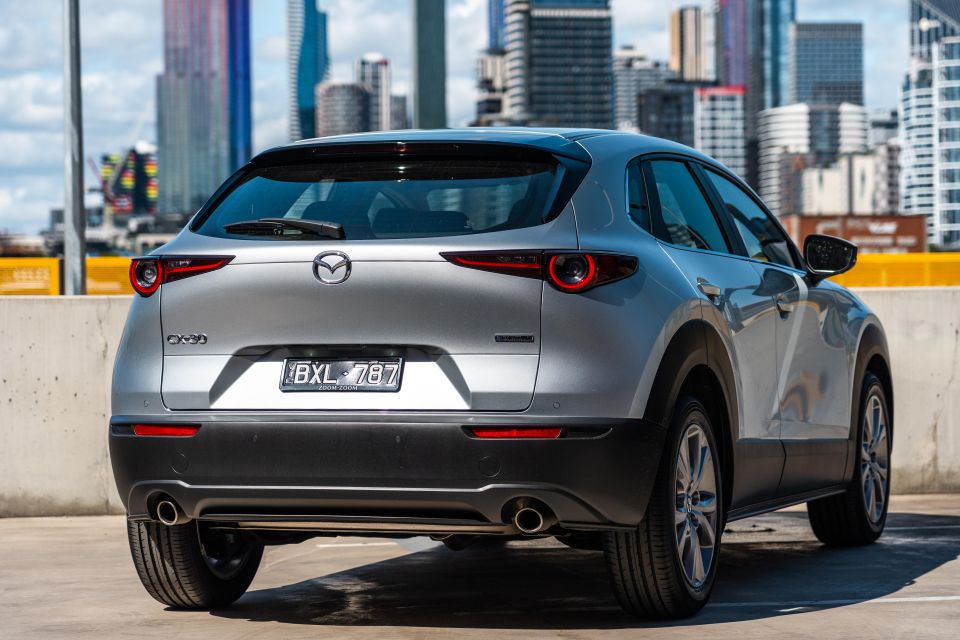

Quickly see how this car stacks up against its competition. Select any benchmark to see more details.
Where expert car reviews meet expert car buying – CarExpert gives you trusted advice, personalised service and real savings on your next new car.
Mazda has been one of the slower movers to electrification, despite hybrid giant Toyota being a stakeholder.

Australia’s second best-selling brand doesn’t offer a range of hybrids like Toyota, nor has it thrown itself at electric vehicles – perhaps a barrier to it knocking its big-volume compatriot off top spot on the local sales charts.
Perhaps part of this is the fact the carmaker is small on a global scale despite its popularity Down Under, and doesn’t have the huge budgets for research and development in these areas as some contemporaries.
Here on test is one of the brand’s efforts in the electrified space – the 2023 Mazda CX-30 G20e M Hybrid – which builds on the standard G20 2.0-litre model with a 24V mild-hybrid system to reduce fuel use, particularly in town.
It’s actually the standard powertrain in the Japanese line-up, with the lean-burning e-Skyactiv X compression-ignition petrol and 1.8-litre turbo-diesel not offered here serving as the higher-end offerings.
Meanwhile, the G20e is the CX-30’s sole mid-tier electrified offering in Australia, with the Skyactiv X positioned as a niche flagship. Recent running changes for the related Mazda 3 saw both G20e and X20 powertrains dropped from the local line-up, so this could also be on the chopping block locally.
But I think the CX-30 M Hybrid is misunderstood. Sure it’s not a proper hybrid like a Toyota Corolla Cross, but it does serve as a more efficient and less polluting alternative than the equivalent CX-30 G20 petrol, and in the single Evolve spec available in Australia brings some choice upgrades to the spec sheet for a few grand extra.
Is the mildly-electrified CX-30 worth a look? Or is it too underbaked for your consideration?
The CX-30 G20e Evolve M Hybrid is priced from $36,660 plus on-road costs – $3550 than the G20 Evolve.
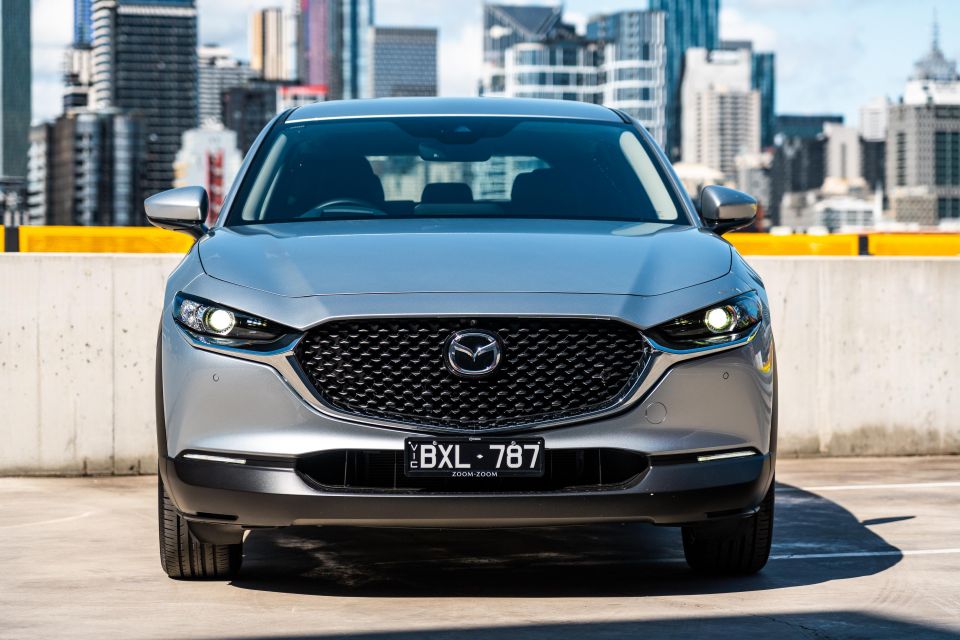
For that extra spend you get a 24V mild-hybrid system which incorporates a belt-driven starter generator and a small lithium-ion battery which captures energy from braking and uses it to power electrical systems and assist the petrol engine under acceleration, while also extending the speed parameters of the stop-start system – more on that in a bit.
Additionally, there are some extra features over the G20 Evolve including the usually optional Vision Technology Package (normally $1500), keyless entry, as well as a 10-way power-adjustable driver’s seat with memory presets.
When you think about it, you’re getting a cleaner and more efficient powertrain as well as extra kit you don’t get in the equivalent G20 Evolve. Perhaps it’s not much of a price premium for the M Hybrid system to begin with.
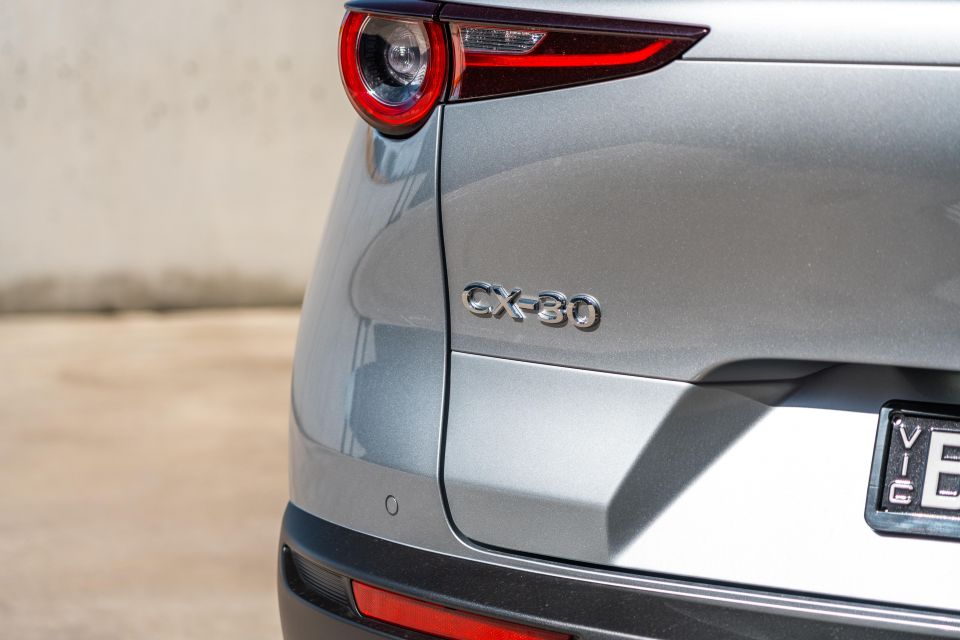
2023 Mazda CX-30 pricing:
All prices exclude on-road costs
Buy your new car without the stress. It's fast, simple and completely free.

Great service from Travis and team, second time I have used this business would not hesitate to recommend them to anyone
Craig C.
Purchased a Ford Ranger in Sunshine Coast, QLD
CarExpert helped Craig save thousands on his Ford Ranger, now let us save you on your next new car.
Find a dealEven several years on from release, this is one of the nicest compact interiors out there.
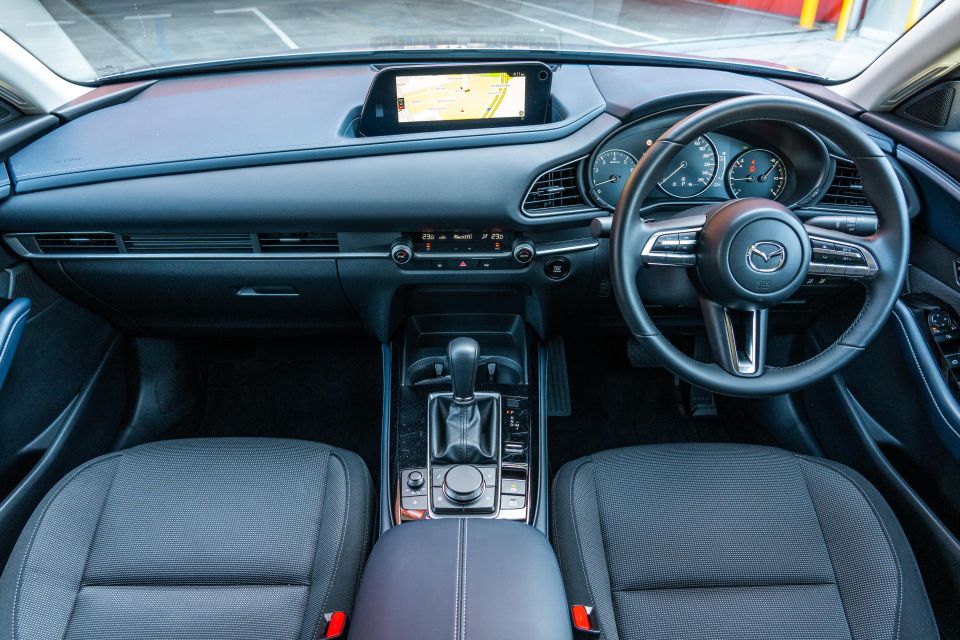
Soft materials, clean lines and good ergonomics make the CX-30 feel quite upmarket for what is a one-up-from-base compact SUV. It genuinely feels up there with the likes of Lexus for presentation and tactility.
The front seats are comfortable and offer great levels of adjustment, which in the G20e Evolve are electrically-operated for the driver rather than manual like the standard G20 Evolve. There are memory presets, too.
Mazda waxed lyrical at the CX-30 (and Mazda 3) launches about the level of detail it put into engineering the seats to ensure long-distance comfort and maximum support. To this day, it has some of the best seats in the business.
The big, round steering wheel is also a tactile delight. I personally am a big fan of the shape and thickness, and the simplicity of the small hub and symmetrical switchgear is all class. Likewise the buttery smooth leather.
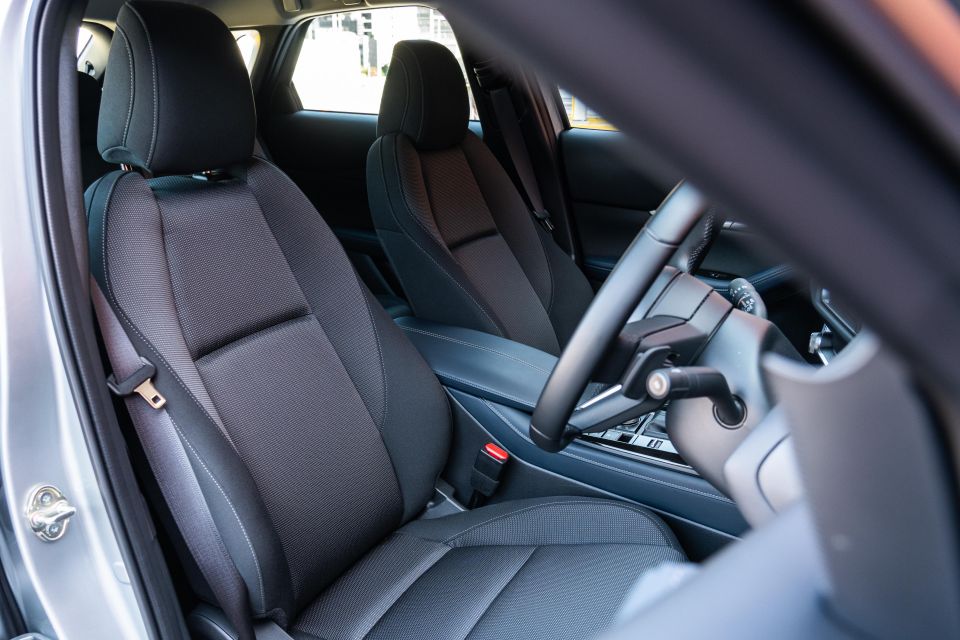
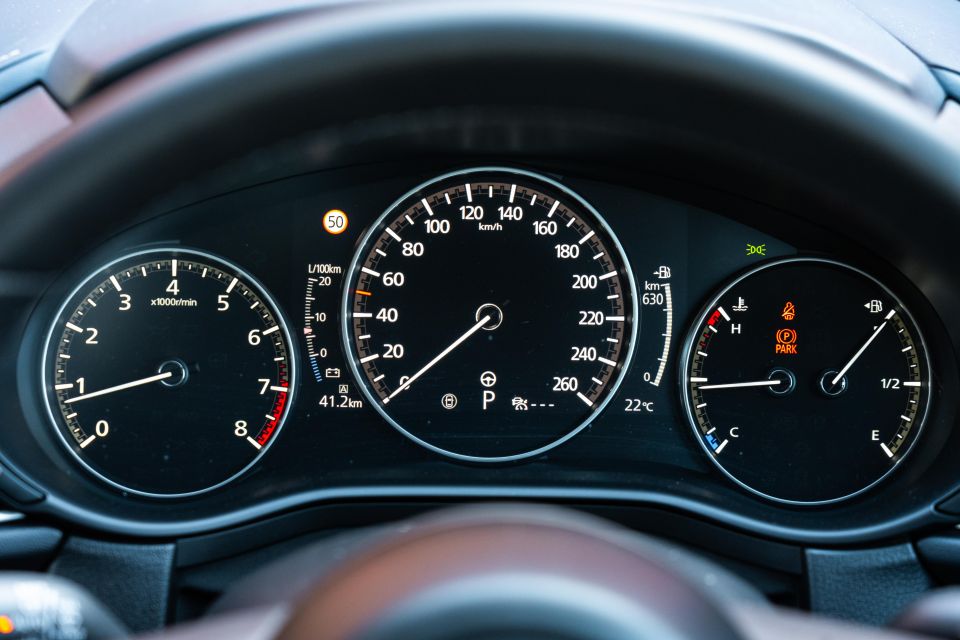
Ahead of the driver, Mazda has gone partially digital with the 7.0-inch supervision display which has a configurable virtual centre dial.
Storage up front is good too. There’s a huge cubby under the centre armrest, big cupholders ahead of the shifter, a shelf to keep your phone, and decent sized door bins.
Disappointingly, the shelf doesn’t feature a wireless smartphone charger like most rivals do – though expect this to be addressed with a forthcoming tech upgrade, which will bring a better infotainment system and wireless smartphone mirroring.
Speaking of the infotainment, the 8.8-inch Mazda Connect Display is looking small these days when rivals are introducing 10.25- and 12.3-inch displays, though it’s running the same software as new models in the Mazda line-up – the 3 and CX-30 debuted this interface, after all.
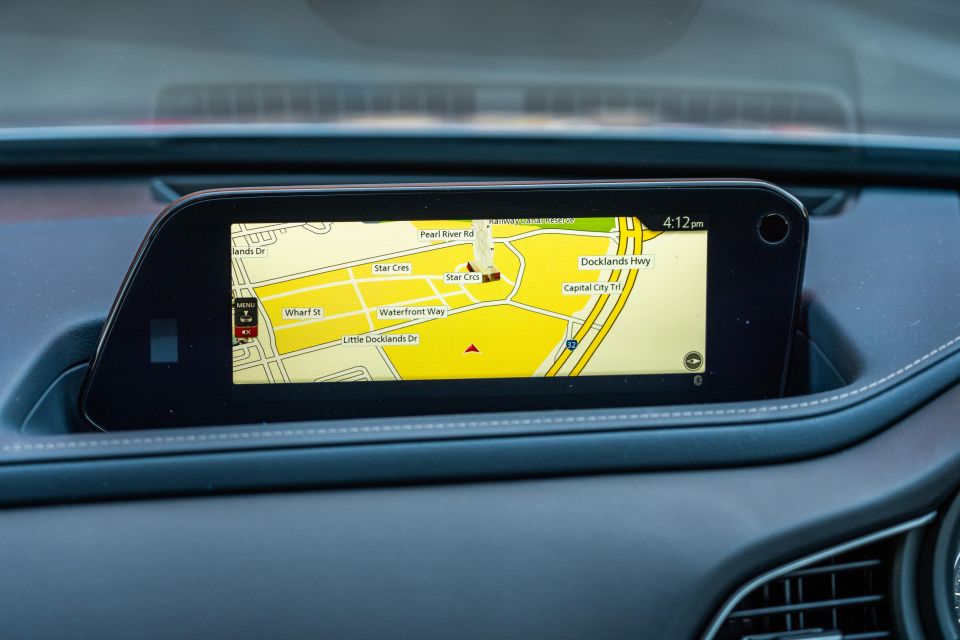
The embedded satellite navigation system works fine, but lacks the net-based live traffic updates and connected services of an increasing amount of rivals.
While it doesn’t offer touch inputs, the CX-30’s infotainment display features a BMW iDrive-style rotary dial and switchgear mounted on the centre console. It may be a bit odd to use Apple CarPlay or Android Auto with a controller at first, but while some of my colleagues lament it I personally don’t mind.
The lack of wireless smartphone mirroring and charging pad are niggling omissions that betray the CX-30’s age, though as mentioned above this will form part of running 2024 model-year changes later this year.
Otherwise, the Mazda Connect system’s DAB radio, and array of user-friendly menus and settings cover all bases. The standard eight-speaker audio system is pretty good too, but the Astina grade’s 12-speaker Bose unit is a noticeable improvement.
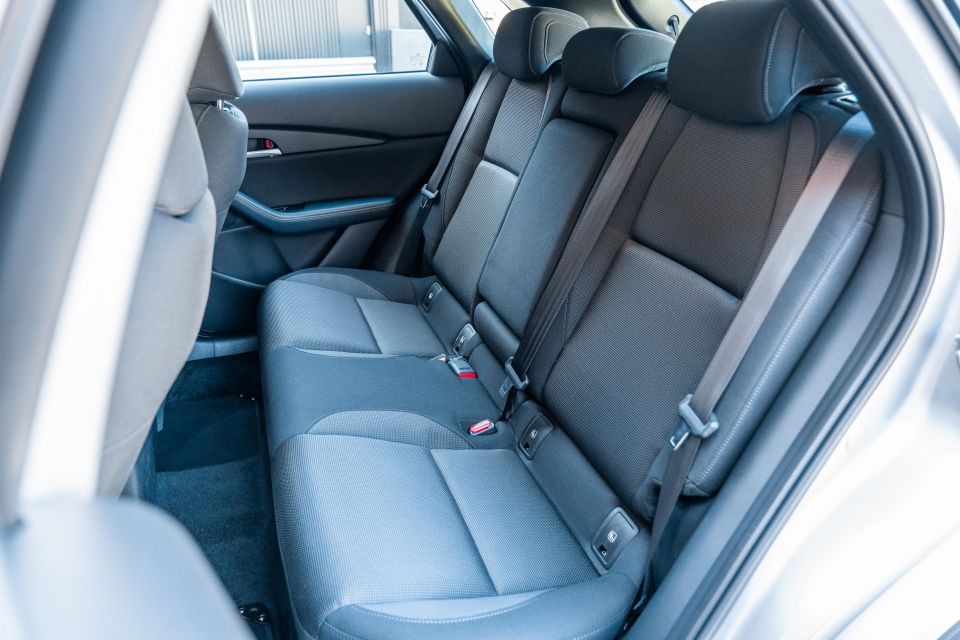
The second row isn’t quite as strong as the first, in fact it’s one of the CX-30’s weaker points relative to the class.
At 6’1 I’m a snug fit behind my own driving position, though kids and smaller adults should be okay. If you’re carrying adults in the back regularly, perhaps look at a CX-5 or rivals like the Kia Seltos.
There are at least amenities like directional air vents, a fold-down armrest with cupholders, a single map pocket behind the front passenger’s seat, and bottle holders in the doors. ISOFIX anchors feature on the outboard positions, and there are top-tethers across all three rear seats.
One thing to note if you’re karting kids around is the rising belt line, which sees the lower edge of the window taper upwards and restrict outward visibility. Something to consider if your passengers are prone to motion sickness.
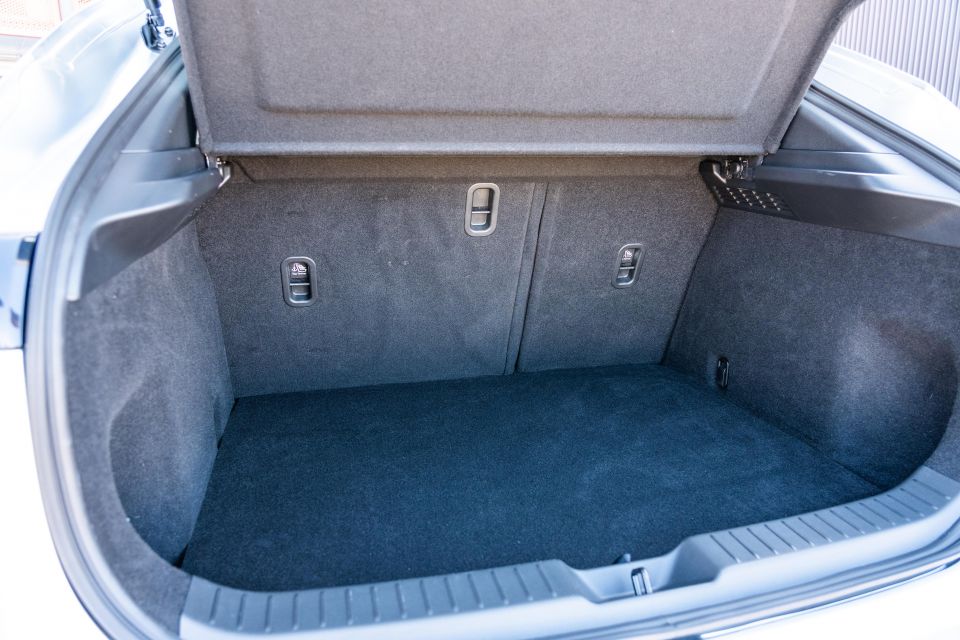
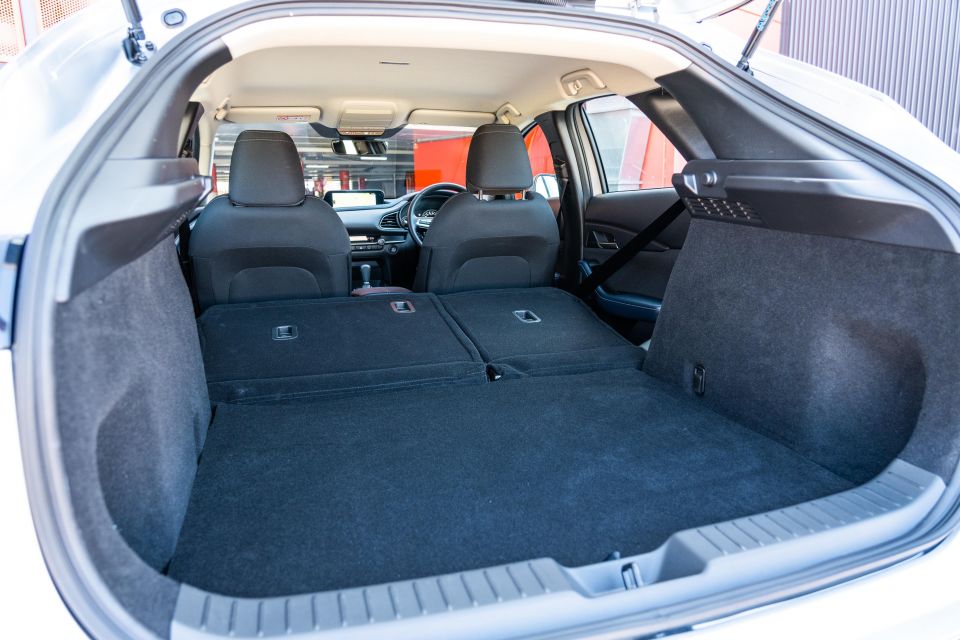
Luggage capacity isn’t really a CX-30 strong point, either. With 317 litres with the second row in place, the compact Mazda is a bit off the pace with class leaders which offer well over 400 litres.
The brand doesn’t quote a volume with the rear seats folded, though they do drop almost flat and don’t have an annoying hump between the boot floor and rear seat backs. Further, the space is nice and square.
Some may find the chunky rear bumper and high load lip challenging for stowing heavier items or bulky things like prams, but it’s otherwise okay. There’s a space saver spare under the boot floor, too.
As noted earlier, the G20e drivetrain teams Mazda’s familiar 2.0-litre four-cylinder petrol engine with a belt-driven starter generator and 24V lithium-ion battery.
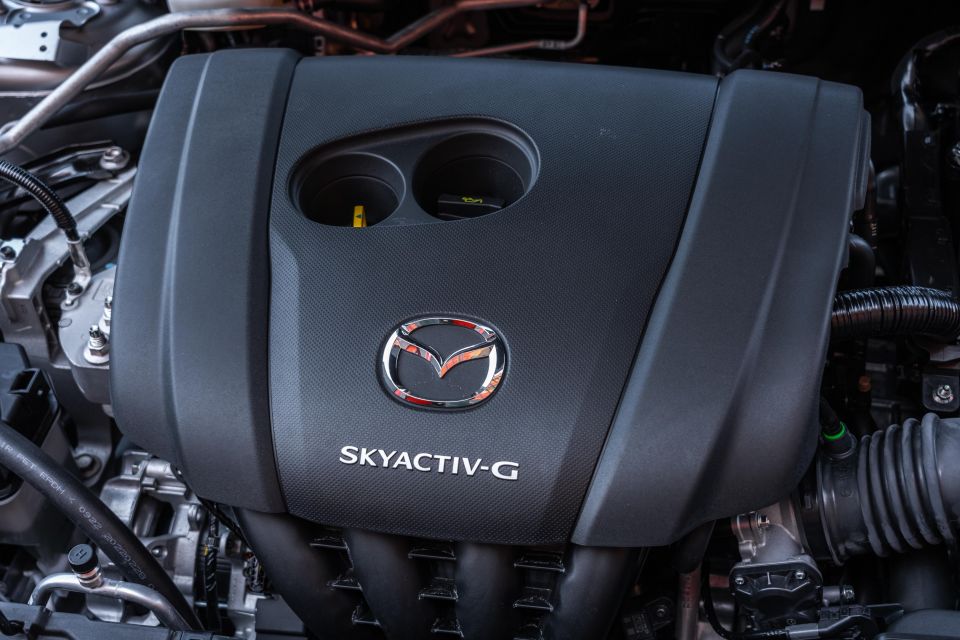
The ISG and battery substitute a traditional alternator and starter motor, helps to power the vehicle’s electrics and assist the engine under acceleration (though Mazda doesn’t quote any add-on outputs).
Further, the ‘M Hybrid’ setup offers regenerative braking to capture energy that would otherwise be lost when decelerating, and can engage the idle stop/start system earlier – from about 20km/h.
Outputs are rated at 114kW (6000rpm) and 200Nm (4000rpm), which is identical to that of the standard G20 powertrain sans 24V M Hybrid tech. Drive is sent to the front wheels via a standard six-speed automatic transmission.
Mazda quotes a combined fuel consumption claim of 6.3 litres per 100km, which is 0.2L/100km less than the non-electrified CX-30 G20. A slightly more substantial 0.4L gap is quoted in urban conditions (7.6L v 8.0L).
Like the wider engine range, the CX-30 G20e is Euro 5 certified and will take 91 RON regular unleaded in its 51-litre tank.
The driving experience is much like any other naturally-aspirated Mazda.
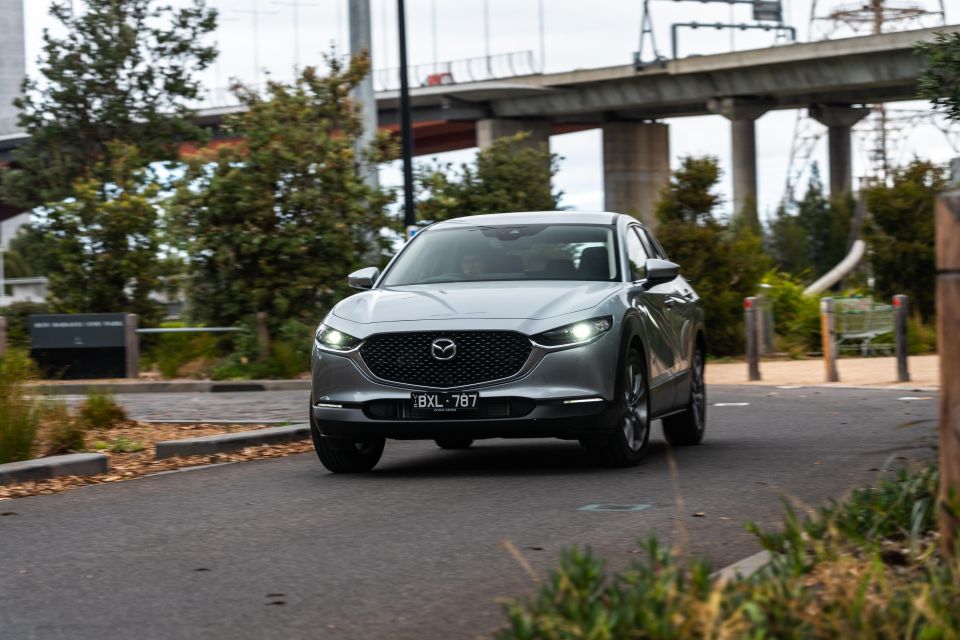
Opting for the M Hybrid really only changes the experience when coming to a stop or setting off from the lights, otherwise the straight-line performance, engine note, ride and handling are all pretty much the same as the G20.
The buzzy, free-revving naturally-aspirated petrol engine is a willing unit that has a bit of character, but if you venture onto the open road often and require the odd overtake, this motor will run out of puff quick.
Max torque – all 200Nm of it – doesn’t come on tap until 4000rpm, while the peak power figure of 114kW is basically near the redline at 6000rpm.
There’s a bit of old-school feel about it, requiring you to work it to get the best out of it, but in a world of relaxed, punchy small-capacity turbocharged motors, you might be left wanting for a bit more.
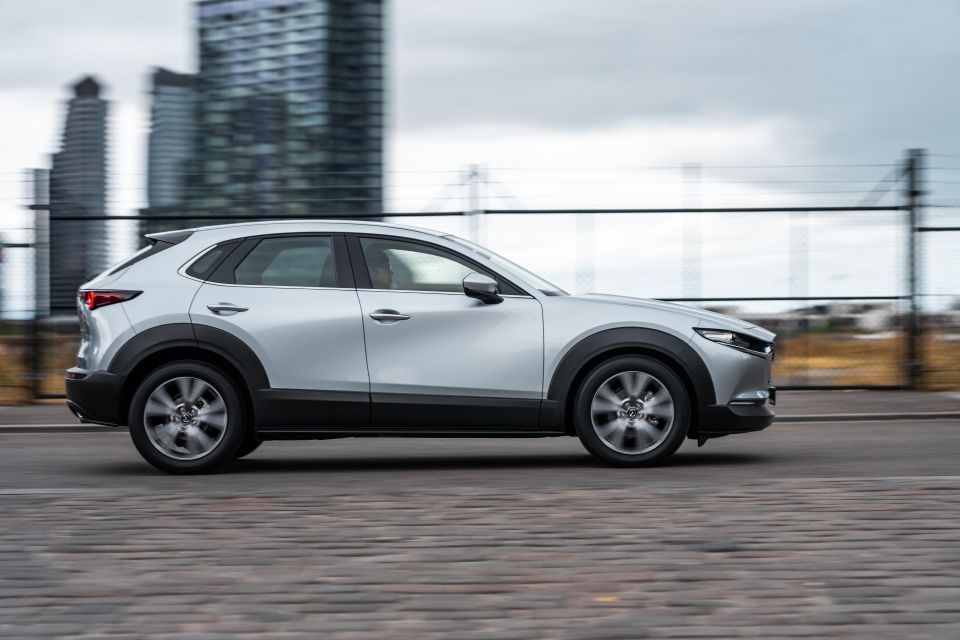
Drive in a relaxed manner, however, and the CX-30 is a fairly refined urban runabout that doesn’t come unstuck on the highway.
It’s planted, comfortable and quiet to putt along in when you aren’t revving it out. The cushy ride is impressive given the 18-inch wheels, and insulation from road and wind noise is excellent for the segment, despite historically being a criticism of Mazda products.
For me, the buttery smooth steering feel, well-balanced chassis and insulated cabin feel at speed is right up there with an Audi Q3, Lexus UX or Mercedes-Benz GLA. Keep in mind, even this G20e Evolve variant is anywhere between $10,000 and $20,000 than any of those premium rivals with equivalent specification levels.
It also has that Zoom Zoom DNA in the playful handling, with a controlled level of body roll and keen handling that has a whiff of MX-5 about it – and it doesn’t feel far removed from the Mazda 3 small car, either.
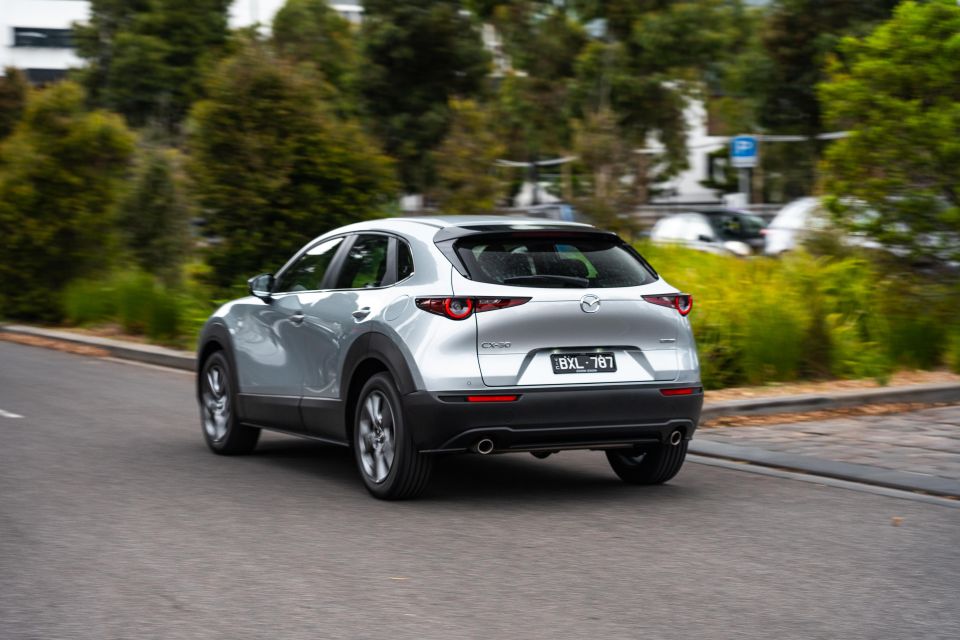
It’s a pretty easy thing to thread about car parks and tight city streets, and while the roofline and tapered glasshouse hinder outward visibility, the G20e Evolve’s standard Vision Technology suite brings surround cameras, as well as front parking sensors and front cross-traffic alert.
Mazda’s wider driver assistance suite is one of the better calibrated that we’ve sampled, with gentler assistance than a lot of alternatives, particularly Japanese ones. The Cruising and Traffic Support feature combines adaptive cruise and lane centring to provide semi autonomous assistance on the highway, while also acting as a traffic jam assistant to take the load off stop-start conditions.
The CX-30 will chime and bong at you a lot with its blind-spot and cross-traffic monitors, and while the sounds themselves aren’t quite as piercing as Mazdas of old, the chimes do get annoying after a while.
All told, however, the CX-30 remains one of the segment benchmarks for on-road feel and enjoyment.
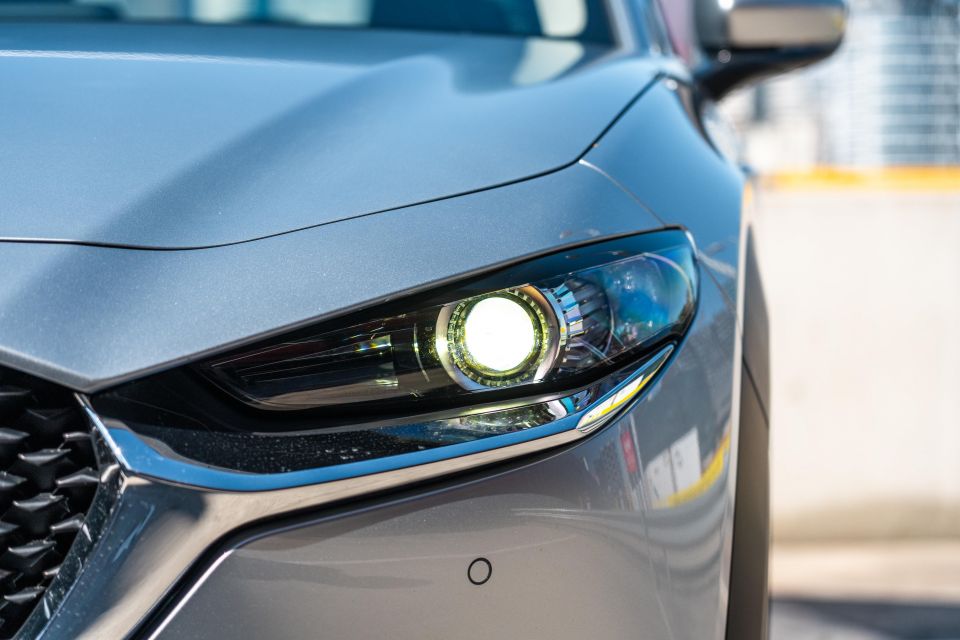
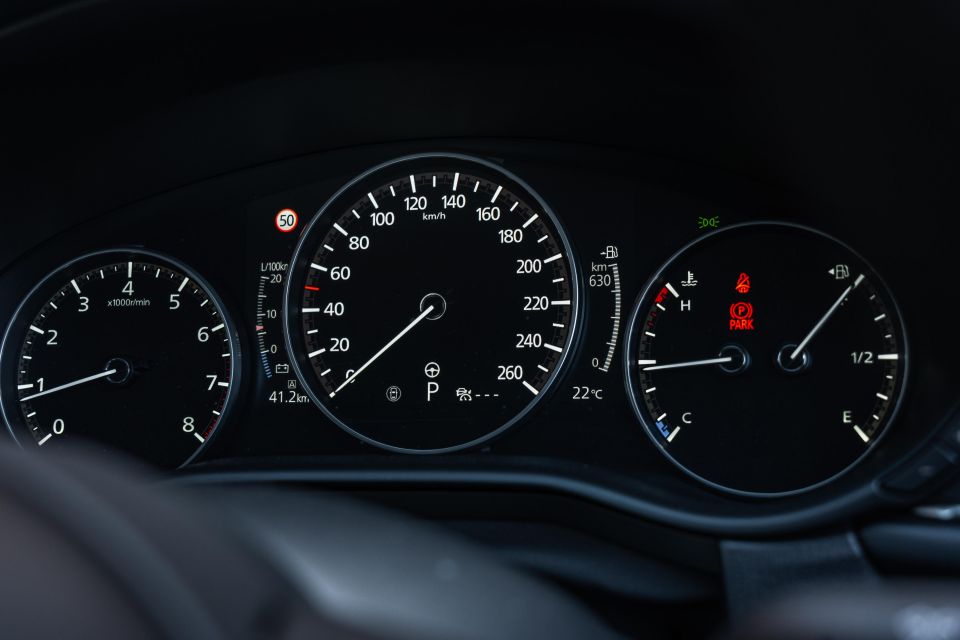
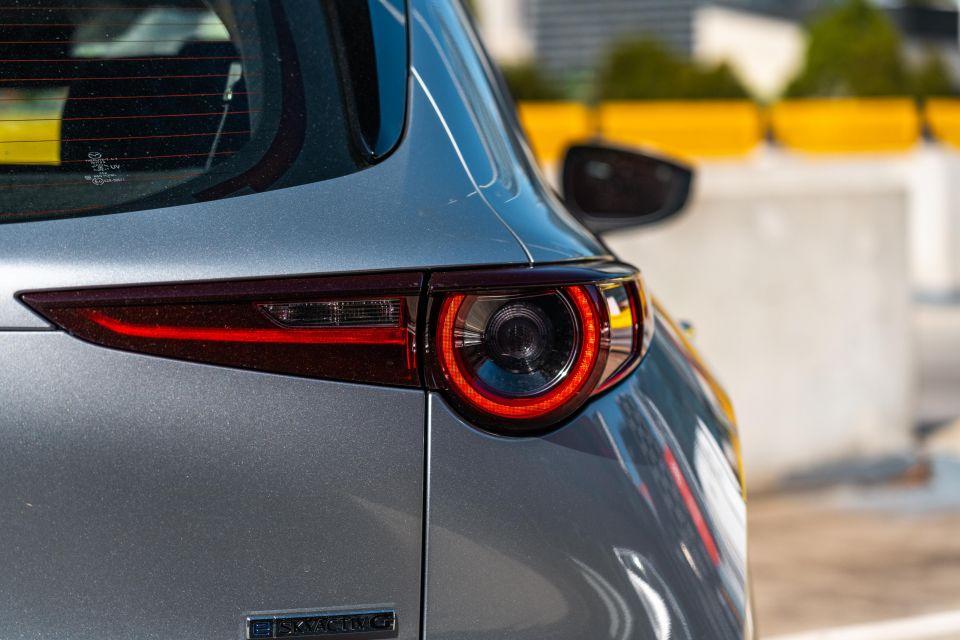
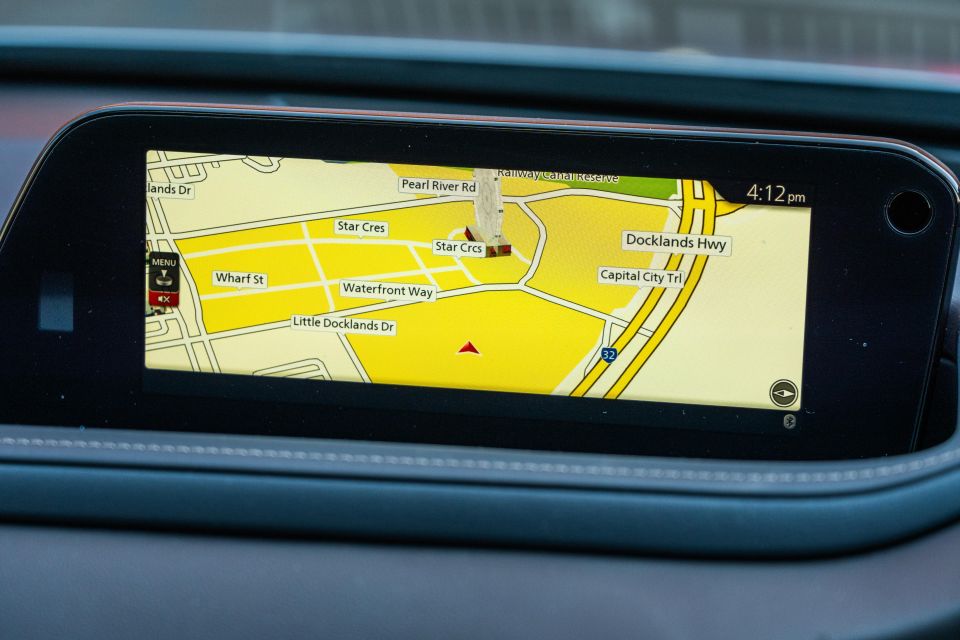
Where expert car reviews meet expert car buying – CarExpert gives you trusted advice, personalised service and real savings on your next new car.
CX-30 Pure highlights:
CX-30 Evolve adds:
CX-30 Evolve M Hybrid adds:
The Mazda CX-30 scored a five-star ANCAP safety rating when tested in 2019.
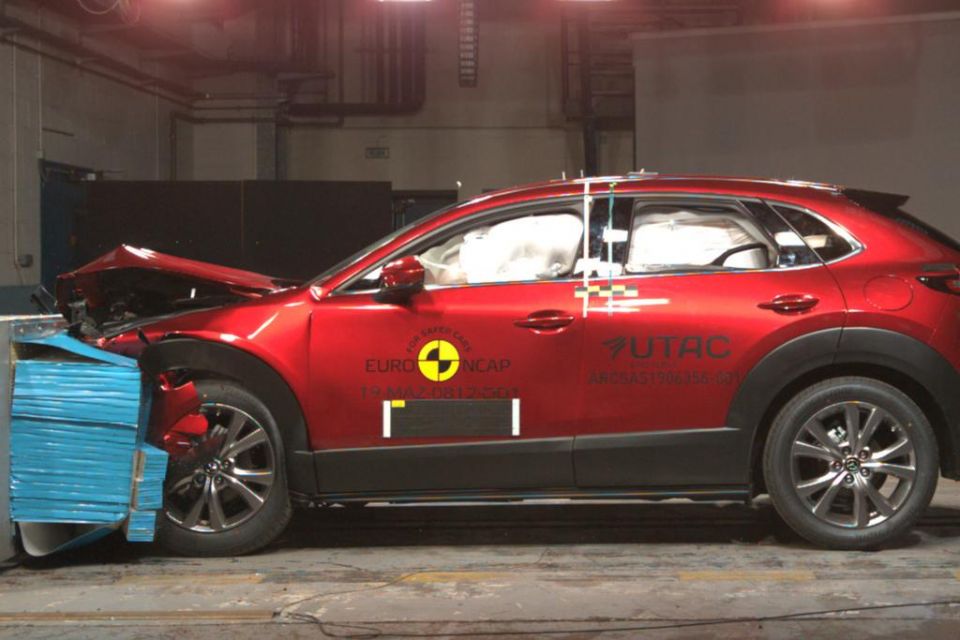
It scored an impressive 99 per cent for adult occupant protection, 88 per cent for child occupant protection, 80 per cent for vulnerable road user protection, and 76 per cent for safety assist.
Standard safety features include:
Vision Technology Package adds:
Note the G20e Evolve as well as Touring SP and Astina models get the Vision Technology Package as standard, as opposed to being available as a $1500 option.
Mazda covers its line-up with a five-year, unlimited-kilometre warranty in Australia. Buyers are also covered by five years of premium roadside assistance with purchase for added peace of mind.
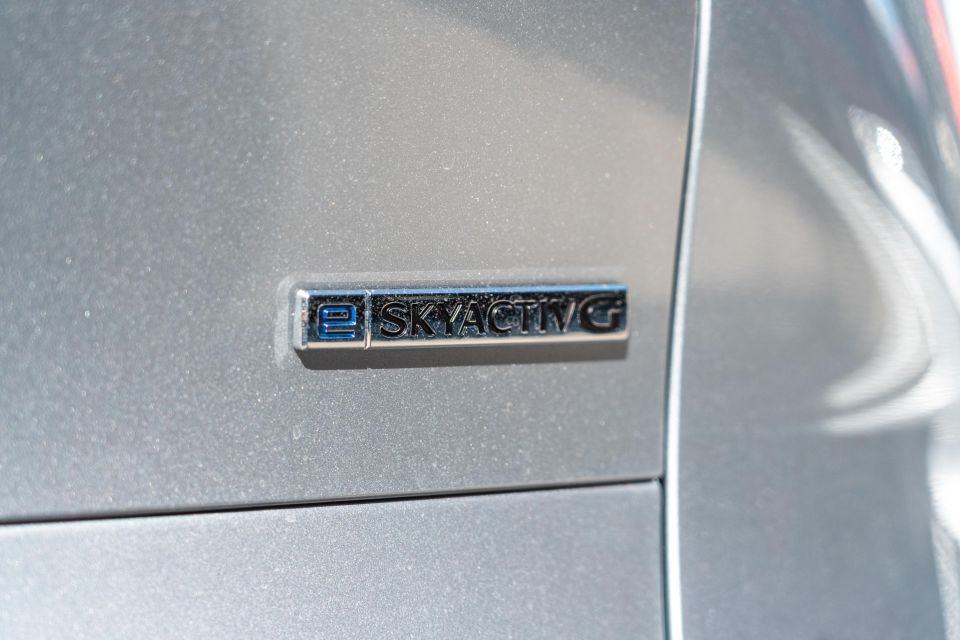
The CX-30 is still subject to 12 month or 10,000km service intervals – unlike new releases which are seeing petrol models extended to 15,000km.
The G20e doesn’t appear to follow a different pricing schedule to the non-M Hybrid G20 Evolve, with the first five visits costing $334, $382, $334, $382 and $334 – totalling $1766. That pricing doesn’t include maintenance items like brake fluid ($74 every 2 years/40,000km) and cabin air filters ($104 every 40,000km).
As for real-world fuel consumption, we saw an indicated 7.9 litres per 100km, over 500km of mixed driving favouring high-traffic peak-hour commuting between Melbourne’s eastern suburbs and the CarExpert office in Docklands.
That’s about 1.0L/100km better than what we’ve seen in a G20-engined CX-30 in the past, though still well up on Mazda’s 6.3L/100km combined claim – but within range of the 7.6L/100km urban cycle figure.
Really, the 24V M Hybrid is incredibly mild as far as hybrids go. It’s a shame Mazda hasn’t been able to implement a system that performs better in real-world scenarios in terms of efficiency.
The CX-30 remains one of my top picks in the small SUV segment, I just wouldn’t rush into getting the G20e expecting Toyota levels of hybridised fuel efficiency.
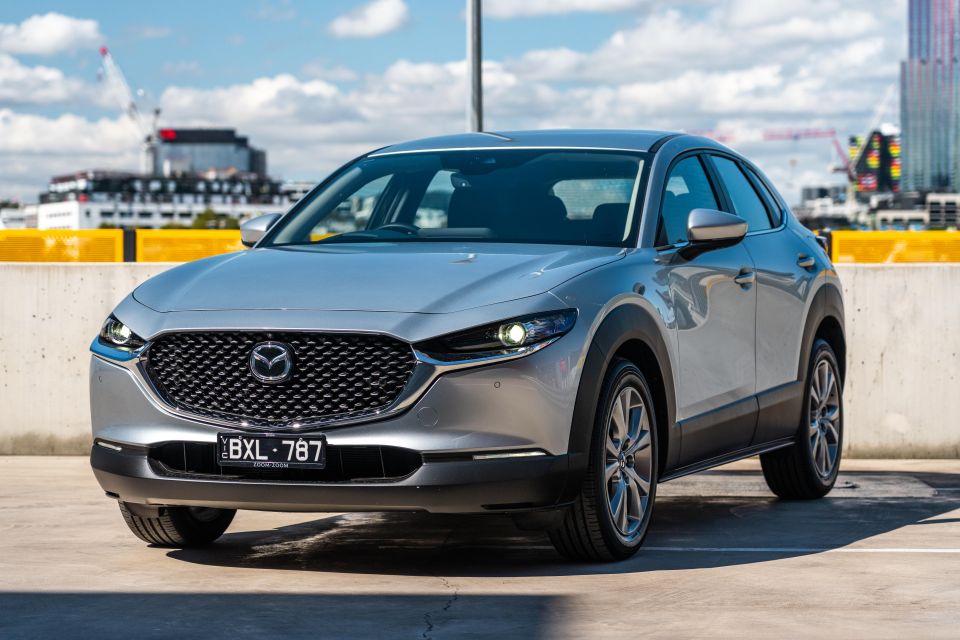
If you can justify the $3500 premium over the regular G20 Evolve with the added features (including the usually $1500 Vision Technology Package), then the CX-30 M Hybrid offers a solid mid-tier package with some minor fuel savings as an added bonus – even if they’re mild.
Otherwise the G20e Evolve retains all the good aspects of CX-30 ownership: fun-to-drive factor, a willing and free-revving engine, one of the nicest cabins in the class irrespective of price point, as well as Mazda’s reputation for reliability and after sales support.
Despite being towards the bottom of the ladder, the Evolve specification covers all the basics and then some, and will really make you question whether you want to go for the Touring or Astina grades unless you really want the G25 or X20 powertrains. In fairness, the 2.5-litre petrol in G25 models is our pick of the range.
We’d also keep in mind that running upgrades should be confirmed imminently, including the availability of a larger 10.25-inch infotainment system with wireless Apple CarPlay and Android Auto, as well as a wireless phone charger – all things that are notably absent from the current range.

Click the images for the full gallery
MORE: Everything Mazda CX-30
Where expert car reviews meet expert car buying – CarExpert gives you trusted advice, personalised service and real savings on your next new car.
James Wong is an automotive journalist and former PR consultant, recognised among Australia’s most prolific motoring writers.


Ben Zachariah
4 Days Ago
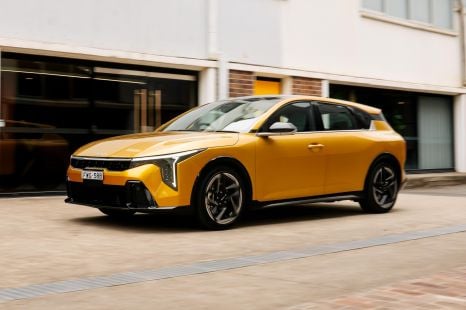

James Wong
3 Days Ago
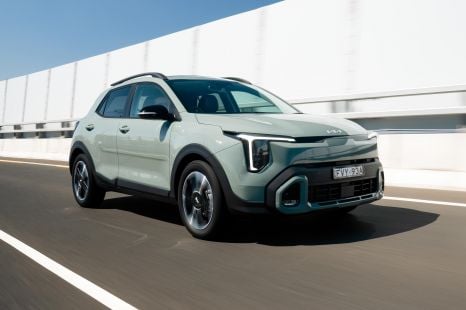

James Wong
3 Days Ago
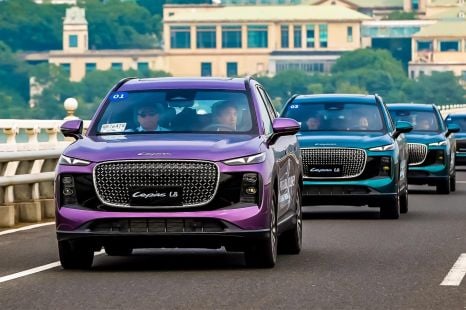

Andrew Maclean
3 Days Ago
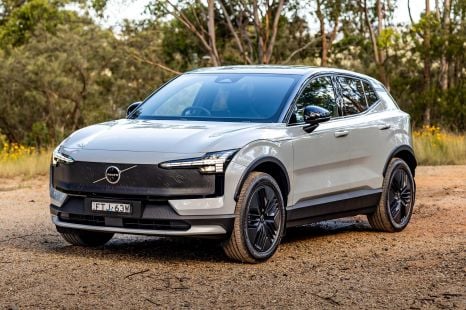

Matt Campbell
2 Days Ago
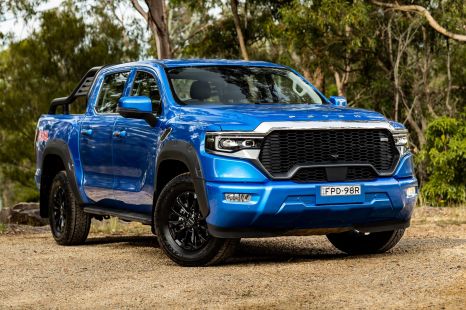

Matt Campbell
18 Hours Ago